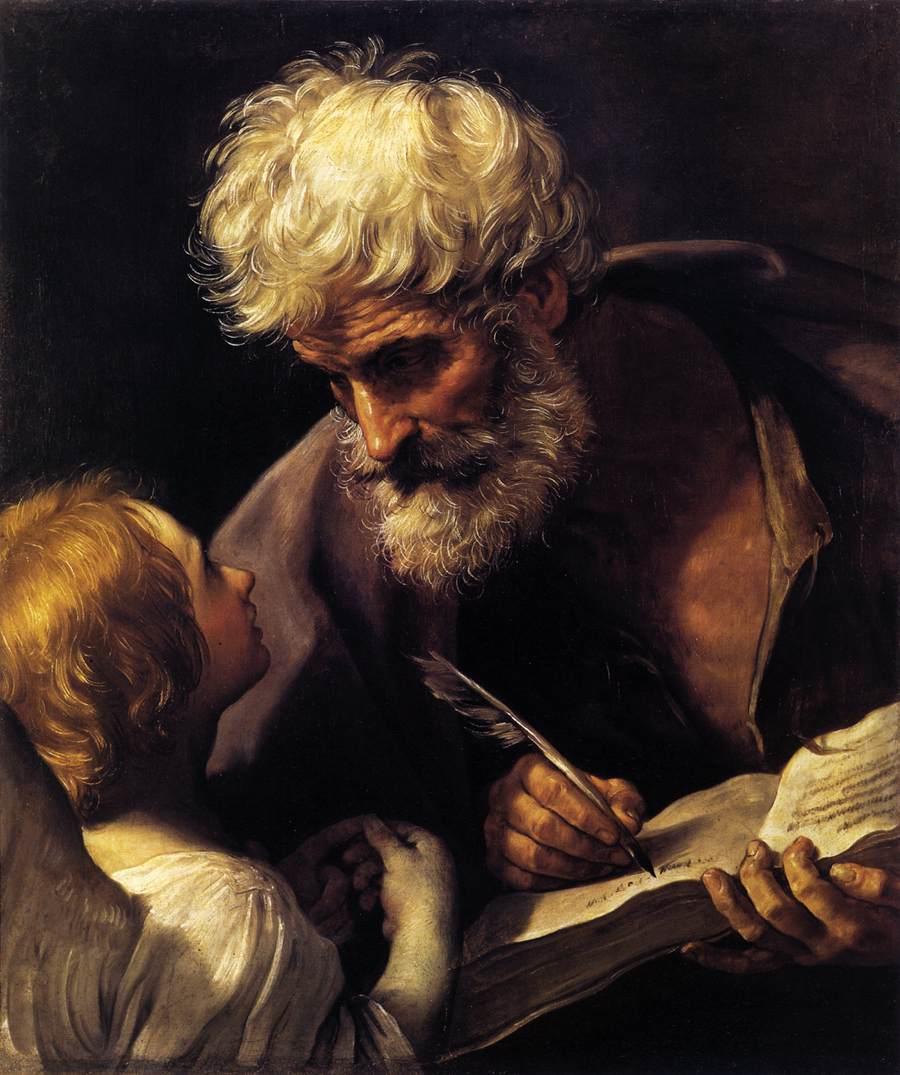Reading the Old Testament in the New: The Gospel of Matthew
Lesson Two: Son of David, Son of Abraham

Lesson Objectives
- To read Matthew 1-2 with understanding.
- To learn the Old Testament history and background behind the quotations and allusions used in the prologue to Matthew’s gospel.
- To gain a fuller appreciation of Matthew’s depiction of Jesus as a “new Moses.”
II. Matthew’s ‘Book of the Law’
The Old Testament isn’t just the background for Matthew’s Gospel - it forms the backbone, the structure of his Gospel.
Many scholars, most notably the Protestant scholar at Yale B.W. Bacon in the 1920s, have noticed that Matthew reads like a "mini-Penteteuch" - that it seems deliberately arranged to resemble the first five books of the Old Testament, known as the Law.
Bacon pointed out that the five books of the Pentateuch, or Law, each contain a body of commandments of Moses. In each book, those commandments are introduced by a "narrative" section that describes events in the life of Israel and highlights God’s mighty deeds.
We see the same pattern in Matthew: five distinct "books" divided the same way - a narrative portion in which Jesus debates His adversaries or performs miracles, followed by His commandments or teachings. Each of the five books ends with a formula-like statement - "And when Jesus had finished…" The five books of Matthew’s "Book of the Law" are "book-ended" by a prologue that describes Jesus’ birth and an epilogue that describes His death and Resurrection.
Scholars today aren’t universally sold on this thesis about the structure of Matthew. But it makes the most sense to us. Matthew seems to be writing in a very deliberate literary style for the purpose of calling readers’ attention to these divisions in his book. And it’s clear that there’s a five-fold structure to the Gospel and a two-fold movement within each book - from narrative or story-telling to discourse or teaching.
This gives us the following basic outline:
Outline of the Gospel According to Matthew
Prologue: The Birth of Jesus
Matthew 1-2
Book I: John the Baptist / Early Ministry of Jesus
Narrative: 3:1-4:25
Discourse: 5:1-7:27 (Sermon on the Mount)
Formula: 7:28-29: "When Jesus finished…."
Book II: Miracles and Commissioning of Apostles
Narrative: 8:1-9:35
Discourse: 9:36-10:42 (Missionary Sermon for Apostles)
Formula: 11:1: "When Jesus had finished…."
Book III: Controversy and the New Kingdom
Narrative: 11:2-12:50
Discourse: 13:1-52 (Teaching on the Kingdom of Heaven)
Formula: 13:53: "When Jesus finished…."
Book IV: Teaching the Church
Narrative: 13:54-17:21
Discourse: 17:22-18:35 (On Life in the Church)
Formula: 19:1: "When Jesus finished…"
Book V: Jesus Enters Jerusalem
Narrative: 19:2-22:46
Discourse: 23:1-25:46 (On End Times, Farewell)
Formula: 26:1: "When Jesus finished all these words…"
Epilogue: Passion and Resurrection of Jesus
Matthew 26:3-28:20
Other Lessons
- Lesson One: Learning to Listen for Echoes: A New Approach to the New Testament
- To understand how important the Old Testament is to reading and interpreting the New Testament.
- To learn what “typology” is and to appreciate its significance for reading the New Testament.
- To understand the relationship between the writers of the New Testament and other first-century Jewish interpreters of Scripture.
- Lesson Three: ‘Not to Abolish, But to Fulfill’
- To read Matthew 3-7 with understanding.
- To understand the Old Testament background and allusions in Matthew’s depictions of John the Baptist, the Baptism of Jesus and His temptation in the wilderness.
- To understand the crucial importance of Jesus’ summary in the Sermon on the Mount: “Do not think that I have come to abolish the law or the prophets. I have come not to abolish but to fulfill.”
- Lesson Four: Healing and Restoration
- To read Matthew 8-10 with understanding.
- To understand the Old Testament background and allusions in Matthew’s depiction of Jesus’ healings and other miracles and the growing tensions with the scribes and Pharisees.
- To understand how Matthew uses evocations of select Old Testament prophets to convey that in Jesus, the long-anticipated “restoration” of Israel has begun.
- Lesson Five: Riddles of Rejection, Rock of Foundation
- To read Matthew 11-18 with understanding.
- To understand the Old Testament background to Jesus’ teaching in parables.
- To understand the deep Old Testament context by which Matthew conveys that Jesus is the long-awaited Messiah and the Church is the restoration of the Davidic Kingdom.
- Lesson Six: David’s Son, David’s Lord
- To read Matthew 19-28 with understanding.
- To understand the Old Testament background to Matthew’s depiction of Jesus’ entry into Jerusalem, His Passion and death.
- To understand the deep Old Testament context by which Matthew conveys that Jesus is the long-awaited “Son of David” and the “Son of God.”


